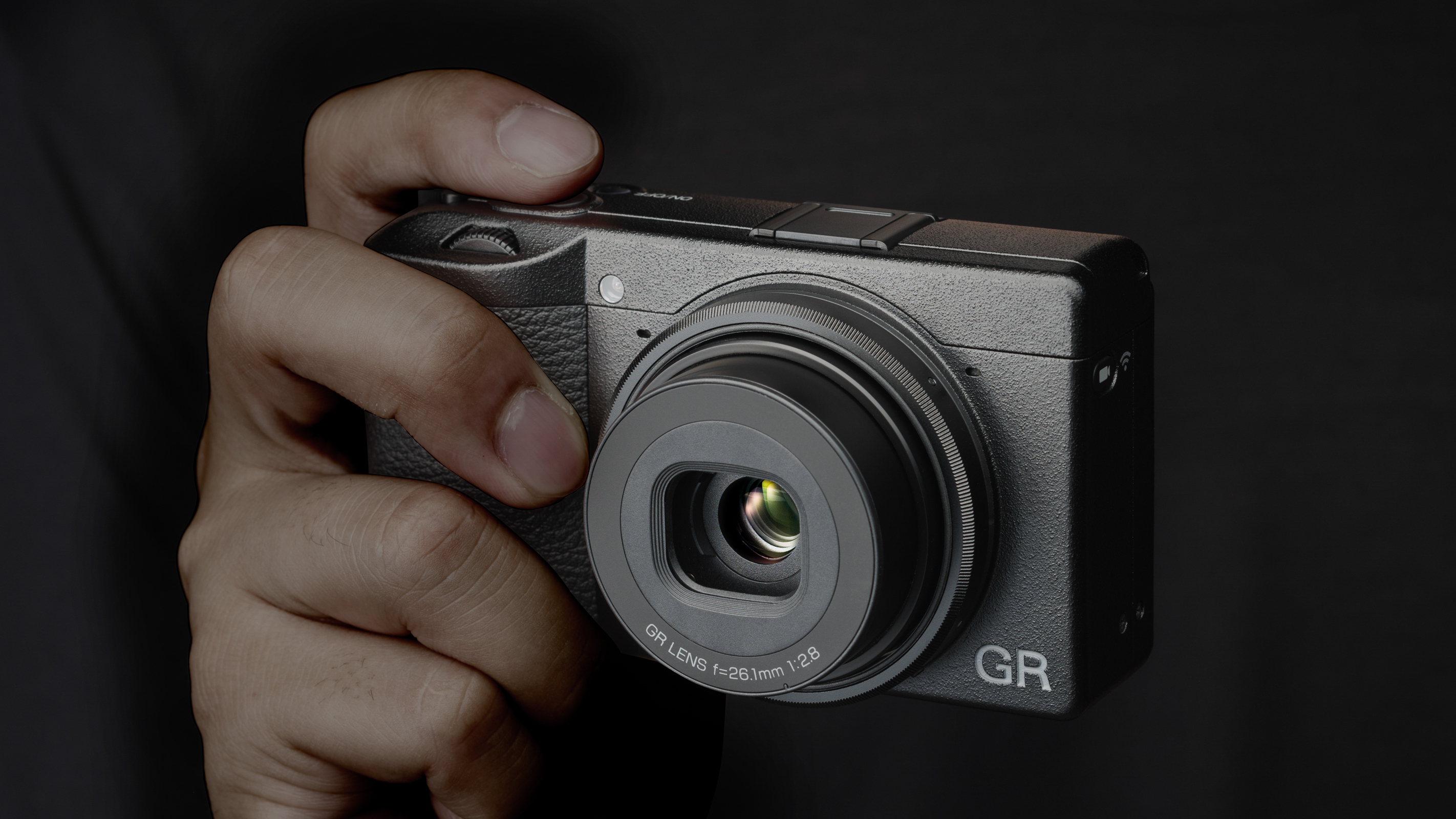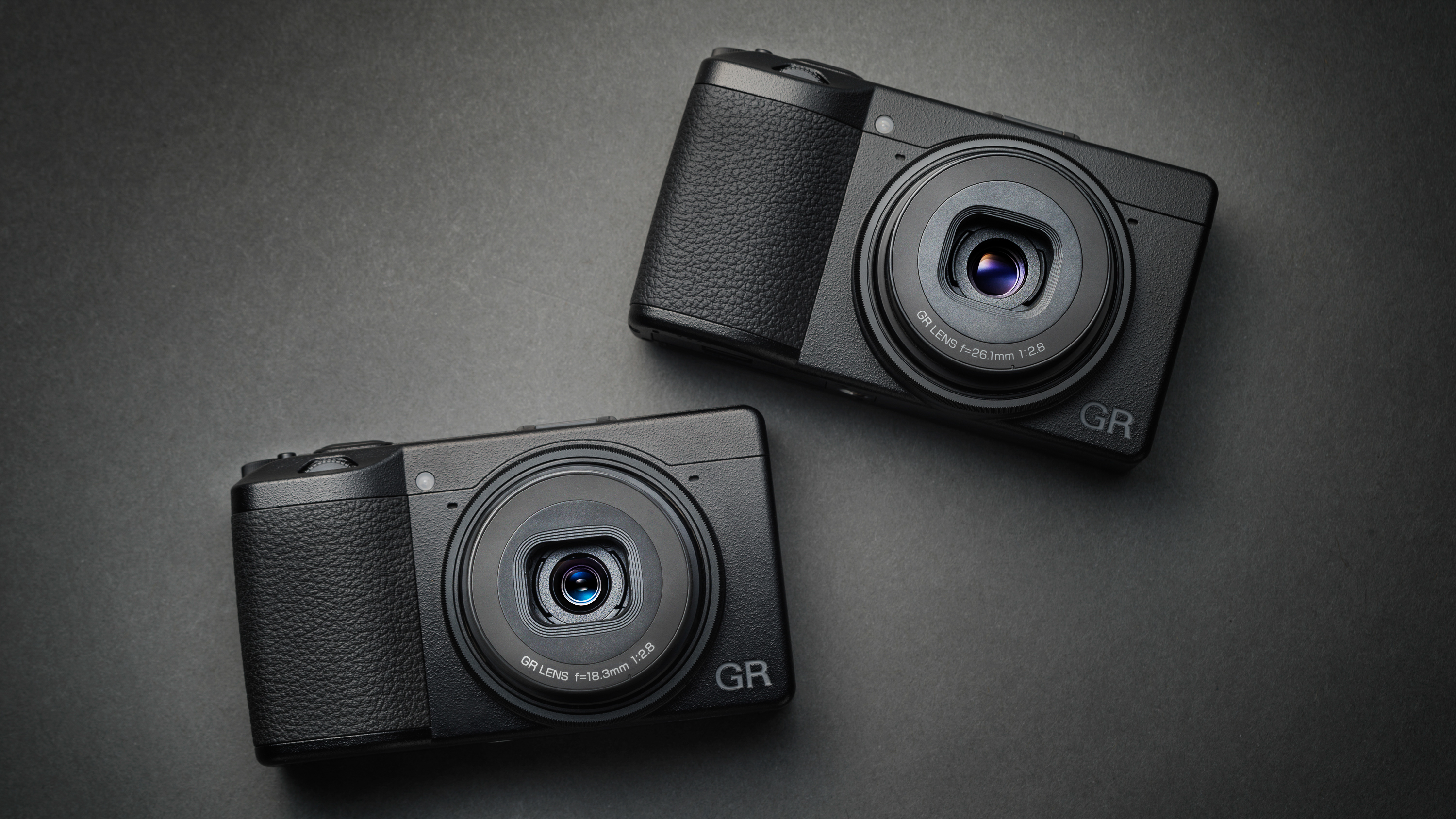Ricoh GR IIIx arrives with a 40mm lens for a tighter angle on street photography
The Ricoh GR IIIx joins the original 28mm GR III – now Ricoh offers two compact big-sensor street cameras

The Ricoh GR III is a modern digital version of a pocket-sized APS-C camera much loved by pros and street photographers. This new version has the same design as the original, but swaps the first camera’s wide 28mm equivalent lens for a more natural 40mm angle of view.
Announced in Europe a month ago, it has just been confirmed that this luxury compact camera will be available in North America – with B&H Photo and Adorama now taking pre-orders for an up-front cost of $996.95 – and also available in Australia as a special order via Ted's Cameras for AU$1,599.95.
The new camera gives photographers a choice. The original Ricoh GR III is still ideal for wideangle street shots, landscapes and tight spaces, but the new GR IIIx offers a more normal, natural perspective, close to a ‘standard’ lens.
Ricoh’s GR III cameras are quite expensive and come with a fixed focal length lens and no viewfinder. However, they are much more compact than regular APS-C cameras and ideal for serious photographers who need a proper camera that can genuinely fit in a pocket. They have limitations, for sure, but they are still amongst the best compact cameras for enthusiasts and pros.

Ricoh GR IIIx key features

The Ricoh GR IIIx boasts a new 26.1mm F2.8 GR lens, equivalent to a 40mm lens on a full frame camera. It incorporates two aspherical lens elements and a 2-stop ND filter which can be engaged for very bright conditions. Inside is a 9-bladed diaphragm for smooth bokeh, and this lens can focus down to 0.12m for close up shots.
The GR IIIx can capture 14-bit raw files and has a maximum ISO of 102,400. The 24.24MP APS-C sensor has no anti-aliasing filter in order to capture maximum detail, but if you are worried about moiré there is an AA Filter simulator that uses microscopic sub-pixel sensor vibrations to create the effect of an anti-aliasing filter over the sensor.

This is made possible by Ricoh’s sensor shift Shake Reduction (SR) system, which offers 3-axis image stabilization and up to 4 stops of shake compensation – it also has an Auto Horizon Correction function.
Get the Digital Camera World Newsletter
The best camera deals, reviews, product advice, and unmissable photography news, direct to your inbox!
The autofocus uses a hybrid contrast/phase-detect system that now incorporates face and eye detection. Ricoh says a future firmware update for the existing GR III will add these features to that camera too.
The older GR III will also get the new model’s upgraded post-shooting functions, including 11 basic modes combining hue, saturation, contrast and grain effects.
No viewfinder, FHD video only

The GR IIIx does share some limitations of its predecessor. There is no viewfinder, which we guess is the price of the super-compact design – though the rear touchscreen display does have an Outdoor View setting for bright light.
It’s also restricted to full HD movies only. That’s probably no great drawback in a camera designed for shoot-from-the-hip street photography, but it does draw attention to the older tech used in this camera.
Ricoh GR IIIx price and availability
The camera has now gone on sale in Europe, and is now available for pre-order in the United States. The retail price is $999 / £899.99 / AU$1,599.95.
Read more:
• Best compact cameras
• Best cameras for street photography
• Best lens for street photography
• Best APS-C compact cameras
• Ricoh GR III review

Rod is an independent photography journalist and editor, and a long-standing Digital Camera World contributor, having previously worked as DCW's Group Reviews editor. Before that he has been technique editor on N-Photo, Head of Testing for the photography division and Camera Channel editor on TechRadar, as well as contributing to many other publications. He has been writing about photography technique, photo editing and digital cameras since they first appeared, and before that began his career writing about film photography. He has used and reviewed practically every interchangeable lens camera launched in the past 20 years, from entry-level DSLRs to medium format cameras, together with lenses, tripods, gimbals, light meters, camera bags and more. Rod has his own camera gear blog at fotovolo.com but also writes about photo-editing applications and techniques at lifeafterphotoshop.com
